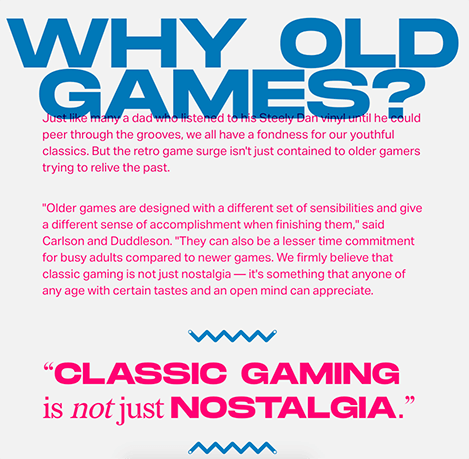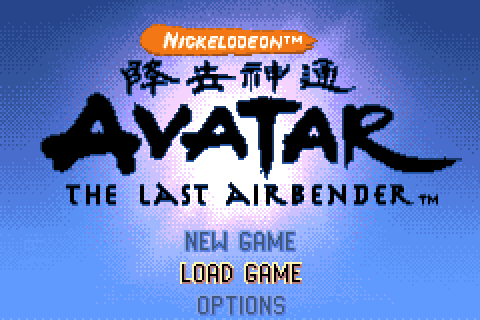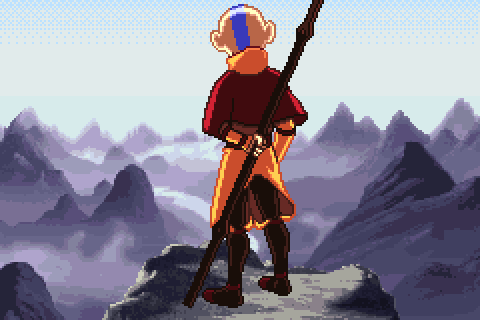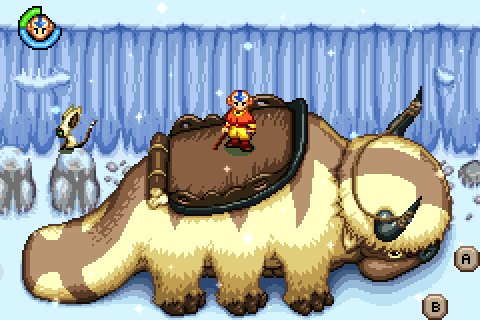Astrolabe 4: Making money (or not) in SFF as a non-fic writer, Avatar: The Last Airbender, and a new app for your Super Nintendo

Pillow Fulla Scrilla
The value of writing has been a hot topic in 2020, particularly in light of the brilliant #publishingpaidme hashtag that raised awareness about the pay gap between white writers and writers of colour. As I continue to carve a place for myself as a professional writer, I’m also trying to be open about how much money I’m making—in hopes of transparency, but also to prompt discussion about the devaluing of writing in certain fields.
A couple of years ago, I made an intentional shift away from writing solely about SFF and toward gaming. I’ve been a gamer my whole life, but also wanted to be able to rely a bit more on writing as a source of secondary income, rather than just hobby money. I wrote about payment for some of my recent pieces on Twitter:
A couple of years ago now, I pivoted to writing more about video games because the pay for SFF non-fiction was... a thing. Here's what I've been paid (in USD) for some of my major pieces, in chronological order:
— Aidan Moher (@adribbleofink) 5:12 PM ∙ Aug 18, 2020
$150
$350
$500
~$900 (pending)
As I mention in the follow-up tweet, these values are notable for two reasons: a) There’s a clear path of personal progression and growth, which I’m pleased about, and b) It’s a hell of a lot more, even on the low end, than the $50-60 flat rate I was being paid to write about SFF.
SFWA’s defined “pro” rate for fiction is $0.08/word. To pull in $40,000/year, which is less than I make at my day job, I’d have to write and publish half a million words a year. That’s two short stories a week—just a smidge shorter than Lord of the Rings—and I still wouldn’t be able to pay my mortgage. Contrast that to my latest freelance contract for games writing which paid me $0.40/word.
It’s a stark contrast.
Gaming’s a huge, global market with (traditionally) a lot of money behind its media (though if my experience is worth anything, freelance budgets have become minuscule/non-existent in 2020), and SFF is just a small slice of book publishing’s larger-but-still-much-smaller-than-gaming pie. So I can’t with a straight face suggest that sites like Tor.com or the now defunct Barnes & Noble SFF Blog should (or even could) pay close to $0.40/word—and I harbour no ill feelings towards all the great editors I've written for, who work passionately with the resources they're given—but there are avenues forward that can help level the playing field for the many SFF non-fiction writers.
Direct support from readers—through things like Patreon or paid newsletters—are going to be a huge part of writing sustainability in the future. In the past, readers have gone to their favourite publication, who’ve reaped ad dollars which they used to pay their writers. More and more, though, we’re seeing sites like Deadspin fold under the weight of corporate buyouts, others like EGM stop accepting freelance feature pieces, and some like Barnes & Noble SFF Blog close outright. The options for writers across all topics and markets is becoming slimmer, especially at the professional level, and direct-to-author support platforms allow them to take (at least some of) their finances into their own hands—creating reliability, stability, and freedom that no longer exists under the traditional model.
With the success of paid newsletters like Sarah Gailey’s Here’s The Thing, Jason Sanford’s Genre Grapevine, and DongWon Song’s Publishing Is Hard, we’re seeing that readers are willing to step up and financially support their favourite writers. As readers, we also have to begin to accept and understand that writing cannot be free forever. The ad-based revenue model is proving to be a failure—and all the money it generated over the past decade is sitting in hedge funds, not writers' retirement savings.
@BNSciFi Writing about SFF—even in most of the pro venues—is basically a token rate job. Direct support from readers has allowed me to pursue a lot of long-form reporting and writing that wouldn't be otherwise sustainable. This goes for most of us writing about SFF.
— Aidan Moher (@adribbleofink) 5:18 PM ∙ Dec 2, 2019
But there’s more that can be done, and I believe union-style representation is the first step. Even places that pay accepted pro-rates for fiction, like Uncanny Magazine and Tor.com still only offer a flat rate for non-fiction. I’ve argued in the past that the first step for proper pay and representation of non-fiction writers is to allow them into SFWA and set an accepted pro rate like the organization has done with fiction.
Hey, @sfwa, in the wake of @BNSciFi closing and its writers looking for new homes, what would it take to open eligibility for freelance SFF non-fiction writers journalists?
— Aidan Moher (@adribbleofink) 9:25 PM ∙ Dec 6, 2019
I explain why I think it’s important in the thread above. SFWA’s response was that it would be a lot of work, and would have to be spearheaded by existing SFWA members. Non-members—the ones fighting for entry—would only be able to volunteer time. Change has to come from within.
In addition to just generally low per word rates for non-fiction, SFF also has an issue with fair competition in the short story market.
As anyone who’s practiced rejectomancy (the art of submitting your short stories) knows, you’re generally only allowed to submit a story to a single magazine at a time. Sometimes you have to wait weeks, months, or over a year (seriously) for a reply to a single submission. It’s usually a rejection, because, you know, the numbers game, and you’re then free to send it onto the next market. One submission at a time. For literally months or years if your story doesn’t sell right away. Add to this the reality that the short story market is hardly a meritocracy, and you’ve got a system that’s immensely unfriendly, especially to new, irregular, or early career writers.
Pitching non-fic journalism pieces is much snappier, and finds a healthier balance of power between the editor and the writer. More often than not, editors expect to be competing against others for a piece. If they love it, they’re gonna fight for it. And you’re pitching a 250 word idea, rather than meticulously perfecting a 4,000 word story and hoping it’s the right fit.
My experience with non-fiction pitching has been collaborative—an opportunity for me and my editor to hammer through idea and execution, and work on a piece that’s right for their audience and my voice/goals. Fiction writing is often a more independent practice, so the same approach of collaborative tweaking before the first word’s laid down might not work, but what can work is a more competitive environment that shifts power toward the writer.
Multiple offers on a story should be an exciting & empowering opportunity for a writer. Editors SHOULD have to fight over the best stories. The current system places the burden on the powerless writer, while editors face no pressure to make an offer.
— Aidan Moher (@adribbleofink) 4:09 PM ∙ Oct 31, 2019
As I argue in the Twitter thread above, short fiction writers should have the same opportunity as non-fiction writers to leverage a competitive submission process. Refusing simultaneous submissions wrests power away from the writer—without whom the publications would have no product.
The best of the best stories should be fought over by the best editors and biggest publications. The writer should benefit if they’re drawing attention from multiple editors. The opportunity for multiple submissions would be hugely beneficial for writers, and would speed up the submission process, because editors would have to jump on the best stories—instead of sitting on them for weeks while they weigh and balance their choices—or else they risk losing out on them. Negotiation is part of business, but the current format for short story submissions steals all negotiating authority from the writer. All they’re left with is to hope to catch the right editor at the right time, or else it’s back to weeks on the slush pile at the next venue.
Whether it’s a revamp of the power structure in SFF short fiction, the admittance of non-fiction writers into SFWA, or an upswell in support for direct-to-author payment platforms, I hope we see a lot of changes over the next decade that reestablish the value of writing and shift power back into the hands of the writers. Because without writers, there would be no SFF.
(My brother is probably the only person who understood the title reference.)
Out & About
(Out & About is where I highlight my work around the web—some recent and some old favourites.)

Over on Input Magazine, I’ve got a piece called “You’re playing games like ‘Super Mario’ all wrong. This app can fix it.” It tells the story of a software engineer and video game preservationist from Mexico City named Artemio Urbina, and his homebrew app, 240p Test Suite.
As anyone who's tried it can attest to, getting your old games to look great on your TV isn't as simple as plugging in your systems and grabbing a controller. It takes a bit of work to get them looking as good as possible. Whether you're playing on a 4K OLED or an old CRT tube TV, hooking your Super Nintendo, Genesis, or PlayStation directly into your HD or 4K TV looks… bad. Really bad.
So, I started looking into available options and discovered there are many great ways to play old games. I settled on acquiring a CRT monitor to get me right back in that '90s gaming zone. Old CRTs use analog signals, which come with wild variability from model to model. To get my games looking not only as good as they used to, but way better than the RF adapters of my childhood, I turned to a free homebrew app called 240p Test Suite.
I’ve put a lot of time into 240p Test Suite over the past couple of years, so getting to talk to Urbina about his creation, and the My Life In Gaming team, who’ve been an invaluable wealth of knowledge, was a ton of fun.
Read “You’re playing games like ‘Super Mario’ all wrong. This app can fix it.” on Input
Some more:
- Personal Canons: There Is No Universal Canon (Here’s The Thing)
- An exploration of Avatar: The Last Airbender (Medium)
- Spellbound : The Familiar Faces Creating the Story for Magic: The Gathering (Tor.com)
LTTP—Avatar: The Last Airbender (Game Boy Advance, 2006)
( LTTP stands for “Late to the Party” and is a regular column where I let Twitter decide which retro game I’ll play for an hour. Do your worst, Twitter!)
The winner of this issue’s LTTP poll was Avatar: The Last Airbender for the Game Boy Advance. It’s a television series that’s near and dear to my heart, but outside of some brief time with an Xbox game before I’d ever watched the show, I’ve never really dabbled in spin-offs. I was quite excited for this.

Avatar: The Last Airbender is an action RPG that takes cues from games like The Legend of Zelda in the way it mixes puzzle solving into exploration, and an ability-based party system like that featured in Wild Arms. As Aang gathers his party, the player is able to swap between characters by using the R and L triggers, each member providing their own attacks and skills for solving puzzles.

It being a Game Boy Advance game, I wasn’t expecting a lot of complexity, but the overworld, puzzles, and villages were surprisingly well designed and dense. Combat was straight forward, but the multi-character system gives the player a lot of options, and the hot-swapping with the shoulder buttons (you only access Aang’s partners for as long as you press the button) makes it play out almost like a hotbar system in an console MMORPG. It’s a really elegant solution on a system lacking in buttons.

The graphics and world are vibrant and full of gorgeous pixel art that really nails the atmosphere of the Avatar: TLA universe. Animations are stiff, but passable when you consider it’s a portable game. In all, I wasn’t expecting to have so much fun exploring the world, and this feels like a really satisfying and chunky on-the-go experience whether you’re a fan of Avatar: TLA or not.
While not as robust as something on the Super Nintendo or PlayStation, Avatar: The Last Airbender on the Game Boy Advance offers a really nice, casual action RPG. It surprised me in a lot of ways because I was expecting a barely-held together licensed game, but got something much sturdier wrapped around Avatar: TLA’s gorgeous world, loveable characters, and general warmth.
You can watch my LTTP stream for Avatar: The Last Airbender on Twitch.
Recommended Reads
Bad Feminist by Roxane Gay—This essay collection is a must-read for anyone engaged with feminist issues, or who wants to learn more about them, intersectionality, racism, and the myriad other issues that are prominent in nearly every facet of our lives. I learned an immense amount from Gay, and her work forced me to address and question my own behaviour from many angles I’d been unwilling or unable to accept previously. Brilliant stuff all around.
Quest Markers
(Quest Markers is a collection of the coolest stuff I’ve seen around the web lately.)

My longtime friend Shawn Speakman is running a Kickstarter for his upcoming book, The Tempered Steel of Antiquity Grey, and it’s absolutely worth checking out. I got to read an early copy of the book, and gave Shawn a blurb because I liked it so much. It’s kind of like if Pierce Brown wrote Robotech, with a dash of Terry Brooks adventure, and capped off with Anne McCaffrey’s delicious dragons.
- How Lesley Nneka Arimah Normalized The Weird And Wondrous For Me (Here’s The Thing)
- The creators of The Legend of Korra look back at the prescient series (Polygon)
- Why the Retro Hugos Have Value (Cora Buhlert)
- Yakuza examines masculinity with care, but leaves women behind (Polygon)
- A Game Without Killing: The Story of Moon's 22-Year Journey to Leave Japan (Vice)
- The 5 must-visit arcades for when the world is safe again (Input)
End Step
A little bit of everything this week! Get in touch and let me know what you think about how we value writers, and what can be done to evolve SFF as media moves into a new era. I’ll be back next issue with something a little more lighthearted: World building in epic fantasy! Spoilers: I like info dumps. You’ve been warned.
Support
There are lots of ways to support Astrolabe and my other work. Check ‘em out!
- Patreon: http://patreon.com/adribbleofink
- Ko-fi: http://ko-fi.com/aidanmoher
- Paypal: http://paypal.me/AidanMoher
Credits
Astrolabe banner photo by Shot by Cerqueira on Unsplash

